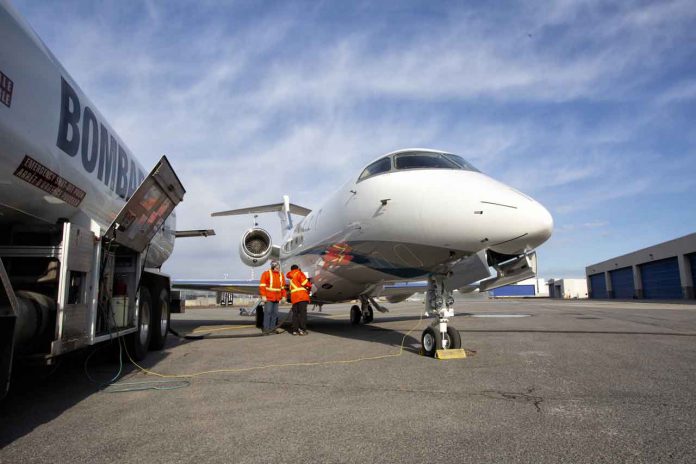Chartering services provided by some management companies aim to fill your aircraft’s empty flight time with revenue-generating flights, offsetting part of its maintenance and operating costs.
Flying directly allows you to travel directly into smaller airports that may be more suitable, removing the hassle associated with airlines’ unpredictable schedules and delays.
Offset Maintenance & Operating Expenses
Maintenance costs associated with owning a private jet can be drastically reduced when flying on charter flights, since the charter company owns and maintains the aircraft for you, ensuring it’s ready to take off and land as safely as possible, paying insurance, regulatory compliance and any other costs related to operating it.
Charter companies incur aircraft positioning fees when leaving a jet parked at an airport for multiple days or longer, which cover expenses such as protecting it from harsh weather conditions and preventing ice, snow or frost accumulation on its surfaces. NovaJet jet charter prioritizes your convenience by offering aircraft with minimal repositioning fees.
Charter flights offer numerous other advantages that make them a suitable option for corporate travelers. A charter flight allows users to avoid regular airport terminals and security measures that impede productivity; additionally, arriving closer to take-off time could result in substantial time savings.
Many HNWIs, executives and affluent individuals have considered owning their own private jet for some time, yet due to its initial cost and additional expenses this option may not always be realistic. Luckily, companies like XO and Wheels Up provide pay-as-you-go membership programs which make flying accessible even for newer consumers who may not yet be ready to put down large sums into an aircraft ownership account.
Offset Insurance Expenses
Business travelers who would like to avoid long lines and security hassles associated with commercial flights often look into buying private jets as an attractive alternative to flying commercially, however the initial costs associated with purchasing such an aircraft, along with insurance premiums, parking costs, and regular maintenance can prove prohibitive to making this transition.
One effective solution for offsetting variable expenses can be making your aircraft available for charter. A management company can arrange it between personal trips, creating revenues that help offset those variable expenses.
Management agreements stipulate that in order to legally obtain charter revenue, your aircraft must possess FAA Part 135 certification and adhere to an agreed upon flight frequency schedule. Failure to do so increases risk for equipment failure as well as reduce pilot proficiency.
Cost to charter a jet can depend heavily on aircraft type and length of trip. A trip between New York (KJFK) and Miami(KMIA) costs roughly $14k while intercontinental travel could exceed 80K; additional fees could include aircraft positioning fees prior to charter and hangar costs, with holiday and event travel leading to 20%-50 increase compared to off-peak rates.
Offset Fuel Expenses
Chartering your own jet means being in control of your itinerary and can customize it according to the times and locations that best suit you – giving you much faster travel compared to scheduled commercial flights that must fit around their available slots.
Your choice of aircraft includes turboprops (four to six passengers) for quick trips, light jets (7-12 passengers) for longer flights and ultra-long range heavy jets (12-17+ passengers) for the ultimate luxurious travel experience. Which aircraft best meets your luggage and passenger requirements will determine which aircraft type best meets them.
Make and model of aircraft can have an effect on demand and hourly rental prices, as do age factors such as their margins – newer jets tend to have larger margins than older models.
Your private jet requires extra expenses when not in use; hangar fees apply if it stays at an airport overnight or for multiple days. Aircraft positioning fees also may apply if the jet you rent for your trip doesn’t start out from its departure airport; these cover operational costs related to moving it there for take-off; one way flights could quickly add up!
Offset Maintenance Expenses
With long lines at airports and flights being cancelled, many business travelers are looking for more effective travel options. Flying privately may seem appealing; however, buying an aircraft may be prohibitively costly. Instead, consider chartering a jet for your next journey; charter companies provide staff for flights as well as maintaining and servicing aircraft for maximum efficiency during flight.
Flying privately offers unmatched levels of comfort and security, from lounging around on a cozy divan to conducting business midair. Access to smaller airports also makes flying private easier; saving both time and money by eliminating connecting flights or layovers.
As with any business travel, chartering an aircraft comes with hidden costs. One such hidden expense is billable flight time – which runs from when an aircraft takes off for takeoff until it comes to rest after landing.
Aircraft positioning fees may also be assessed when moving an aircraft for another charter flight, particularly in colder climates where snow, frost and ice may collect on aircraft surfaces. Furthermore, foreign trip fees, landing permits, overflight permits and customs charges may apply depending on your route and destination country.







